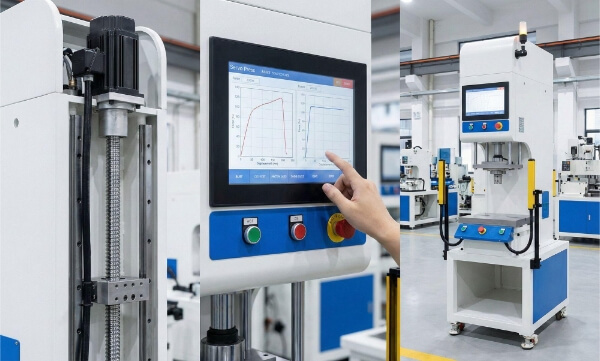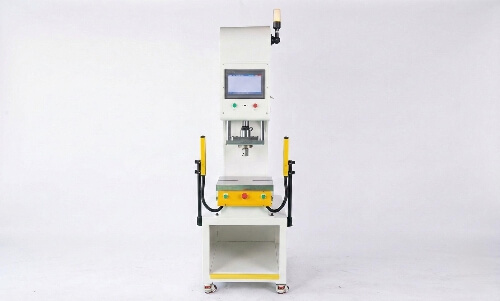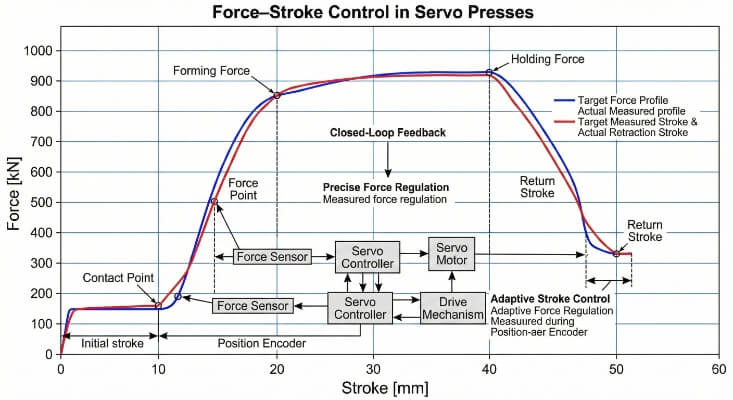CNC milling is one of the most versatile and efficient machining processes used in modern manufacturing. But what exactly is it, and why is it so important? Many people outside manufacturing might be uncertain about its specifics, yet it plays a crucial role in shaping the parts we use daily.
Are you curious about how CNC milling impacts production? Let’s take a closer look at the types of CNC milling, their advantages, and how they Work.
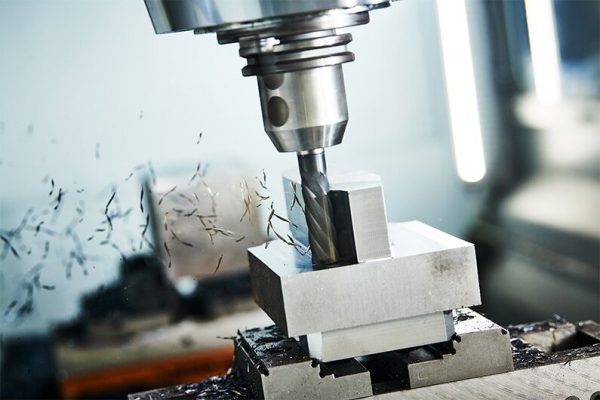
What is CNC Milling?
CNC milling is a subtractive manufacturing process. It uses a rotating cutting tool to remove material from a workpiece. This process is controlled by a computer program, which tells the machine exactly how to cut. CNC stands, meaning the machine follows specific instructions. Milling machines shape materials like metals, plastics, and composites into precise parts.
In CNC milling, the workpiece is secured on a table. A rotating cutting tool moves across the workpiece to create the desired shape. The machine follows detailed instructions that tell it the speed, direction, and type of cuts to make. These instructions are written in a language called G-code.
How Does CNC Milling Work?
CNC milling is a step-by-step process that turns digital designs into physical parts. Each step ensures that the final product is made with precision and efficiency. Let’s look at how it works.
Step 1: Design the Part (CAD)
The first step is to design the part using CAD software. Engineers and designers create a detailed 3D model of the part, defining its dimensions, shapes, and features. This design acts as the blueprint for the part that will be made.
Step 2: Convert Design to CNC Instructions (CAM)
Once the design is complete, it must be converted into machine instructions. This is done using CAM software. CAM takes the CAD design and generates a G-code, a set of instructions for the machine. The G-code tells the CNC machine how to move, what tools to use, and the cutting paths to follow.
Step 3: Set Up the CNC Milling Machine
Before the milling process begins, the machine needs to be set up. The workpiece is secured onto the machine’s bed, and the right cutting tools are selected. The G-code is also entered into the machine. The machine operator checks everything to ensure the machine is calibrated correctly and ready to begin.
Step 4: Execute the Milling Process
Once everything is in place, the CNC machine starts following the instructions. The cutting tool moves across the workpiece, removing material layer by layer. The machine continues until the part has the desired shape. The process is closely monitored, and adjustments are made to meet the exact specifications.
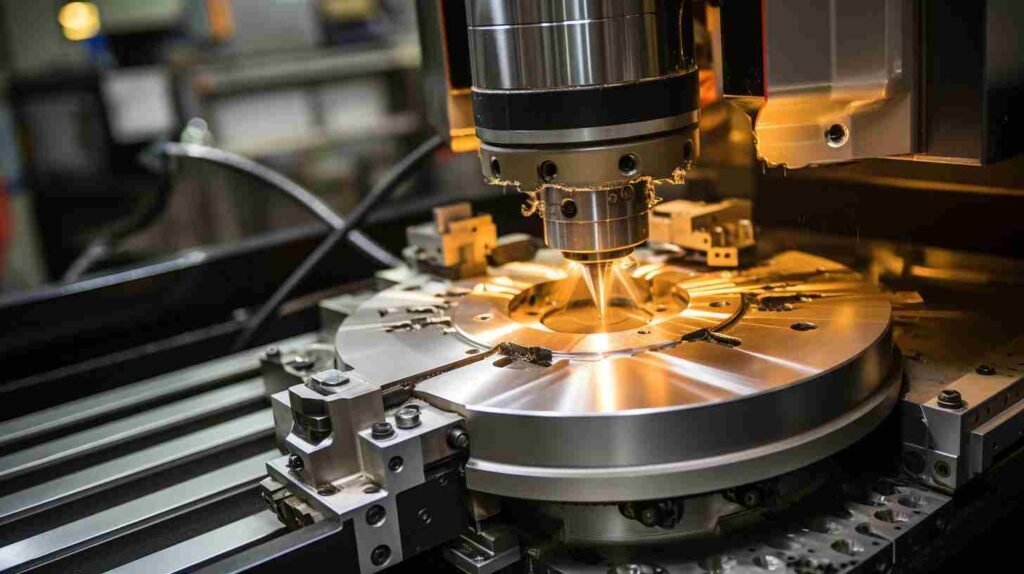
Types of CNC Milling Operations
CNC milling offers different operations, each designed to create specific shapes or features on a part. Here are some common types of CNC milling operations:
Face Milling
Face milling uses a rotating cutter to remove material from the surface of a workpiece. The cutter is placed perpendicular to the workpiece. It cuts across the surface, creating a smooth, flat finish. This operation is often used to produce flat surfaces and large areas.
Plain Milling
Plain milling, also called surface milling, creates flat surfaces on a workpiece by rotating the cutter parallel to the surface of the workpiece. It’s commonly used to produce simple, smooth surfaces without complex features.
Angular Milling
Angular milling cuts surfaces at specific angles, such as slots or grooves. The cutter is positioned at an angle to the workpiece, allowing it to create angled features. This operation is ideal for parts with cuts that are not 90 degrees.
Form Milling
Form milling uses special cutters to create irregular shapes or contours on a workpiece. The cutter’s profile matches the shape needed, allowing it to carve out patterns, such as grooves, profiles, or channels. This operation is perfect for parts with complex geometries.
End Milling
End milling uses a cutter with cutting edges at the tip to create detailed features. The tool can cut along the length of the workpiece and is used for both flat and vertical surfaces. It’s versatile for making slots, pockets, and complex shapes.
Slot Milling
Slot milling is a milling operation that creates narrow, precise slots in a workpiece. The cutting tool removes material from between two surfaces to create a slot. It’s commonly used in applications that need a channel or passage.
Side Milling
Side milling uses a milling cutter to cut along the side of the workpiece. The tool moves perpendicular to the surface of the material. This operation helps create grooves, slots, or features on the edges of parts. It is often used alongside other milling operations for more complex parts.
Types of CNC Milling Machines
Different types of CNC milling machines are designed for specific tasks based on part complexity and required precision. Here’s an overview of the most common types:
Vertical Milling Machine
A vertical milling machine has a vertically oriented spindle, meaning the cutting tool moves up and down. This machine is ideal for making parts with flat surfaces and complex shapes. It’s commonly used for drilling, tapping, and precision cutting. The vertical design makes it easier to see and work on smaller parts.
Horizontal Milling Machine
A horizontal milling machine has a spindle mounted horizontally. This machine is better for cutting large, heavy parts or making long, straight cuts. It’s more efficient when handling larger workpieces and can often perform multiple cuts simultaneously. The horizontal design also helps remove chips more easily, improving efficiency.
Multi-Axis CNC Milling Machine
Multi-axis CNC milling Machines have more advanced capabilities than traditional machines. These machines can operate in three, four, or even five axes, allowing for the creation of more complex parts. Multi-axis machines can cut from different angles, reducing the need to reposition the workpiece. This leads to better precision and faster production.
Turret Milling Machine
A turret milling Machine has a stationary base with a rotating turret that holds the cutting tools. The turret can be adjusted in various directions to perform different operations without moving the workpiece. This machine is versatile and often used for smaller production runs or tasks requiring high precision.
Bed Milling Machine
A bed milling Machine has a fixed bed that supports the workpiece while the cutting tool moves vertically along it. This setup allows for heavy-duty machining, especially with larger parts. Bed milling machines are used for tasks that require high material removal rates.
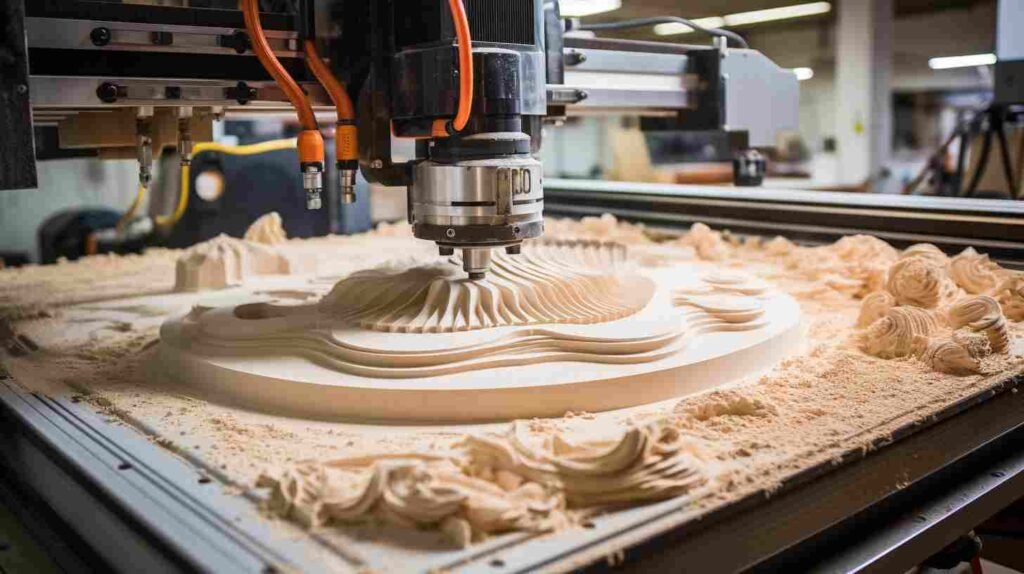
Components of a CNC Milling Machine
A CNC milling Machine has several key parts that work together to ensure precision, efficiency, and stability during machining. Here’s an overview of the essential components:
Frame
The frame provides the structural support for all the other parts of the machine. It absorbs vibrations during operation and keeps the machine stable, ensuring precise machining. The frame is usually made from strong materials like steel to handle heavy-duty use.
Spindle
The spindle holds and rotates the cutting tool. It is powered by a motor and removes material from the workpiece. The speed and power of the spindle can be adjusted based on the material being cut and the type of operation being performed.
Axes
CNC milling Machines usually operate along three or more axes (X, Y, and Z), which control the movement of the cutting tool and the workpiece. The X and Y axes control horizontal movement, while the Z axis controls vertical movement. More advanced machines may have additional axes (A, B, or C) for more complex operations.
Columns
The columns support the machine’s vertical and horizontal movements. They often hold the spindle and the work table. Columns are built to be rigid and stable, ensuring the machine stays precise during milling.
CNC Control Panel
The CNC control panel is where the operator inputs commands and adjusts machine settings. This panel loads G-code, controls machine operations, monitors performance, and adjusts speed and feed rate settings. Modern machines often have digital touchscreens for easier control and customization.
Automatic Tool Changer (ATC)
The ATC allows the machine to switch between different cutting tools automatically during machining. This is helpful in multi-step operations where various tools are needed for other cuts. The ATC saves time by removing the need for manual tool changes.
Tool Holders
Tool holders keep cutting tools stable and properly aligned with the workpiece. They come in different sizes and designs for various tools, such as end mills, drills, and taps.
Table
The table is where the workpiece is placed during the milling process. It can move along one or more axes to position the workpiece under the cutting tool. The Table typically has slots or fixtures to secure the workpiece, which may be motorized for automated movement.
Coolant Tank
The coolant tank holds the coolant fluid used during the milling process. The coolant cools the cutting tool and workpiece, reducing heat buildup. This helps prevent tool wear and material distortion. It also helps remove chips from the cutting area, improving the machining process.
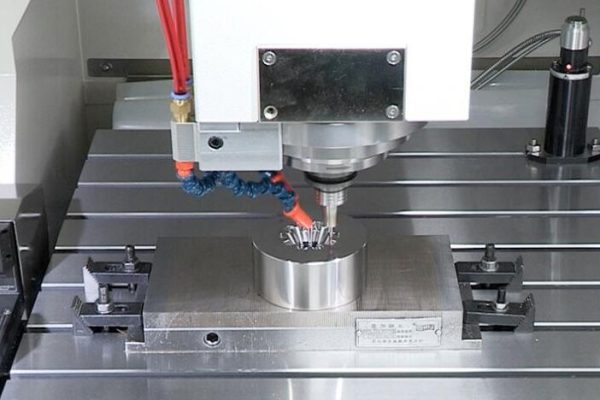
Materials Used in CNC Milling
CNC milling works with a wide range of materials. The right choice depends on strength, weight, cost, and how the part will be used. Common materials include:
- Metals: Aluminum, stainless steel, Steel, Brass, Copper, Titanium
- Plastics: ABS, Polycarbonate, Nylon
- Others: Ceramics, composites, phenolics
CNC Milling Precision and Accuracy
Precision is everything in CNC milling. Even tiny errors can make parts unusable. Let’s break down how to get it right.
Tolerance in CNC Milling
Tolerance is the allowed variation in a part’s dimensions. For example, a hole might need to be 10mm ±0.1mm.
- Why it matters: Tighter tolerances mean parts fit together perfectly but cost more to produce.
- Standard tolerance: Typically ±0.005 inches (±0.127mm) for most CNC mills.
- High precision: Advanced machines can reach ±0.001 inches (±0.025mm).
Factors Affecting CNC Milling Precision
Machine Calibration
- Machines must be perfectly leveled and aligned.
- Regular checks prevent drift in accuracy over time.
- Warm-up cycles help stabilize the temperature for consistent cuts.
Tool Wear and Maintenance
- Worn tools create uneven cuts and poor surface finishes.
- Replace tools before they degrade too much.
- Use coolant to extend tool life and maintain precision.
How to Achieve Tight Tolerances in CNC Milling?
- Use the right machine: 5-axis mills handle complex parts better than 3-axis.
- Choose proper tools: Sharp, high-quality cutters reduce errors.
- Optimize cutting speed: Too fast causes vibration; too slow increases heat.
- Secure the workpiece: Prevent movement with strong clamps or vises.
- Compensate for tool deflection: Adjust for bending in long, thin tools.
Advantages and Disadvantages of CNC Milling
CNC milling is a widely used manufacturing method with many benefits and some limitations. Let’s examine the main advantages and disadvantages of CNC milling.
Advantages of CNC Milling
High Precision and Accuracy
CNC milling machines produce highly detailed and accurate parts with tight tolerances. The machine’s precision ensures that parts are made exactly as specified, which is important for industries requiring high-quality components.
Complex Shapes and Geometries
CNC milling can create complex shapes and designs that would be difficult or impossible to make with manual machining. This ability is excellent for producing intricate parts with multiple features.
Automation and Efficiency
CNC milling is fully automated, reducing the need for manual work. This increases productivity and lowers the chances of human error. Once the program is set, the machine can run continuously, making parts with minimal supervision.
Versatility
CNC milling machines can work with many materials, such as metals, plastics, and composites. They can also handle different tasks, including drilling, tapping, and turning, making them useful in many industries.
Consistency in Production
CNC milling ensures consistent quality. The machines follow the exact instructions for each part, ensuring that every piece meets the same standards. This is especially important in high-volume production.
Disadvantages of CNC Milling
High Initial Investment
CNC milling machines require a significant upfront investment. The machine, software, tools, and setup costs can be high. This may be a barrier for small manufacturers or startups with limited budgets.
Limited to Material Removal
CNC milling is a subtractive process, which means it can only remove material from the workpiece. Unlike additive manufacturing (3D printing), it cannot add material, which limits its flexibility in some applications.
Complex Setup
While CNC milling is automated, setting up the machine can be time-consuming and complex. It involves creating CAD and CAM designs, writing the G-code, and configuring the machine. The setup can be more challenging for intricate parts.
Tool Wear and Maintenance
The cutting tools in CNC milling machines wear out over time due to constant contact with the workpiece. Regular tool maintenance and replacement are needed, which adds to operational costs and downtime.
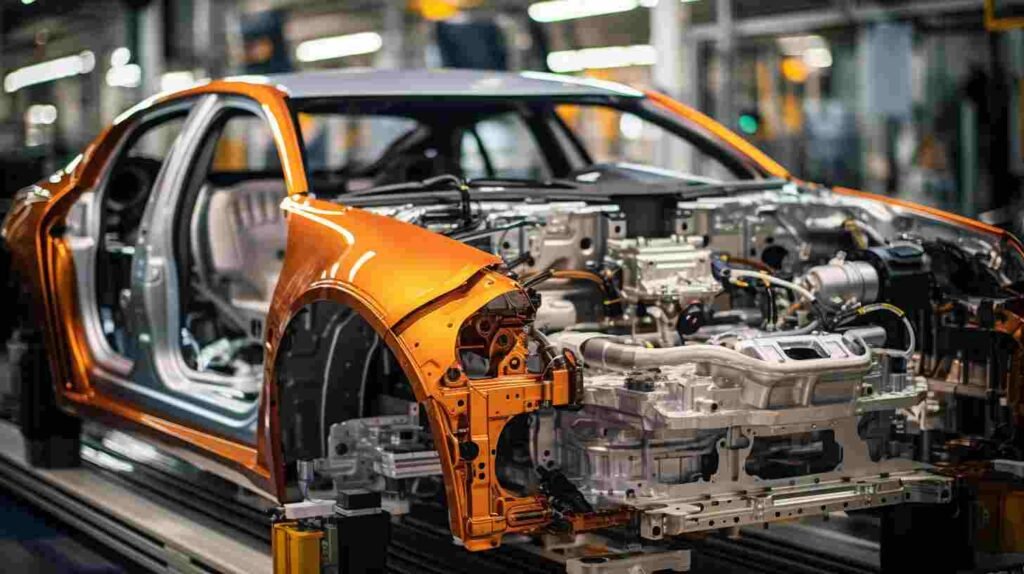
CNC Milling Applications
CNC milling is a versatile machining process in many industries to create high-precision parts and components. Some key sectors depend on CNC milling for their manufacturing needs.
Aerospace Industry
In the aerospace industry, CNC milling is essential for producing high-precision parts that meet strict quality and safety standards. CNC milling machines often make components like turbine blades, aircraft frames, and structural parts.
Automotive Industry
The automotive industry uses CNC milling to produce various parts, from engine components to interior elements. CNC milling machines create high-precision complex shapes like gears, brackets, and valve bodies.
Medical Devices
CNC milling is widely used to produce medical devices that require high precision and tight tolerances. Parts like surgical instruments, implants, and prosthetics are often made using CNC milling machines.
Electronics Manufacturing
In electronics manufacturing, CNC milling creates parts like circuit boards, connectors, and housings. The ability to produce small, detailed features with high accuracy is key to making electronic components that fit together perfectly.
Factors That Affect CNC Milling Costs
The cost of CNC milling can vary widely depending on several factors. Here are the main factors that influence CNC milling costs:
Material Costs
Common materials like aluminum and steel are usually less expensive, while specialty materials like titanium, composites, or plastics can cost more. The cost of raw materials depends on factors like availability, properties, and how difficult they are to machine.
Machine Running Time
The longer the machine runs, the higher the cost. Factors like the complexity of the part, the required precision, and the number of machining operations can all affect how long the machine needs to run. More complex parts take longer to mill, which increases labor and energy costs.
Design Complexity
Intricate designs with tight tolerances or multiple features require more advanced tools and longer programming times. Some designs may need multiple passes or special milling operations, which adds time and cost to the project.
Production Volume
The cost per part is higher for small batches or one-off prototypes due to setup and machine downtime. However, the price per part for larger production runs usually decreases because the setup costs are spread across more units.
Surface Finishing Option
The surface finish of a part can significantly affect the overall cost. These processes will increase the price if the part needs extra finishing steps like polishing, anodizing, coating, or bead blasting.
Conclusion
CNC Milling is an exact and versatile machining process that creates complex parts by removing material from a workpiece. Using a computer-controlled machine, CNC milling can handle various materials and produce intricate shapes with great accuracy.
Are you looking to optimize your production with CNC milling? Contact us today to learn how our advanced CNC milling services can help bring your designs to life with high-quality, cost-effective solutions.
Hey, I'm Kevin Lee

For the past 10 years, I’ve been immersed in various forms of sheet metal fabrication, sharing cool insights here from my experiences across diverse workshops.
Get in touch

Kevin Lee
I have over ten years of professional experience in sheet metal fabrication, specializing in laser cutting, bending, welding, and surface treatment techniques. As the Technical Director at Shengen, I am committed to solving complex manufacturing challenges and driving innovation and quality in each project.

